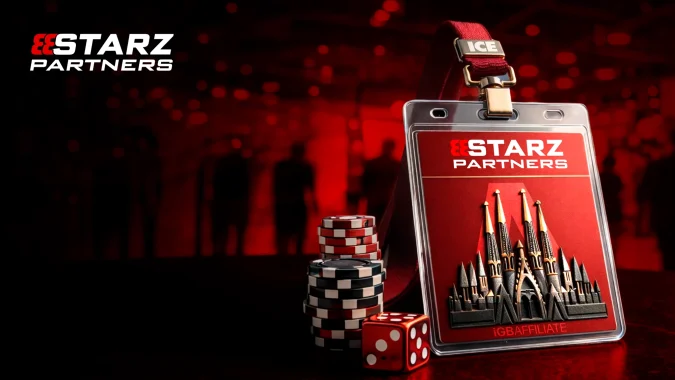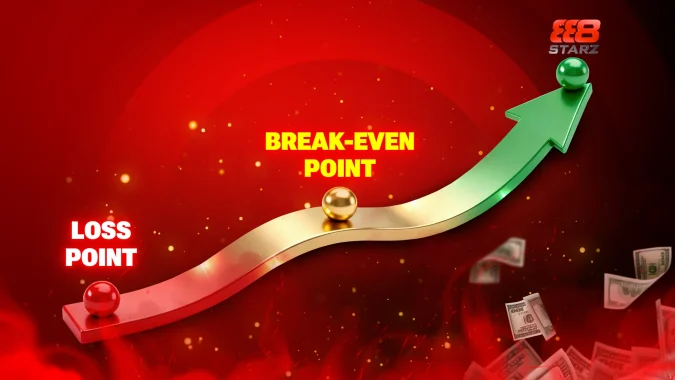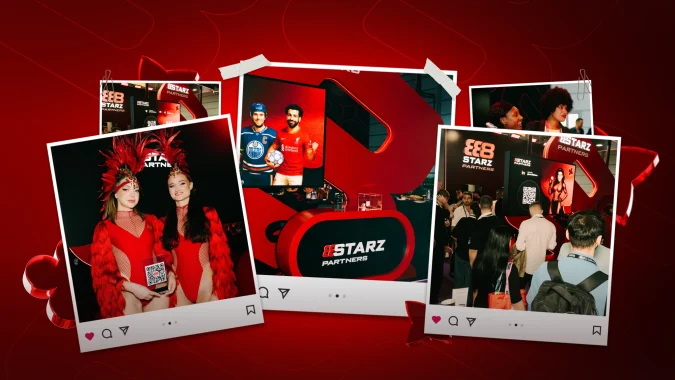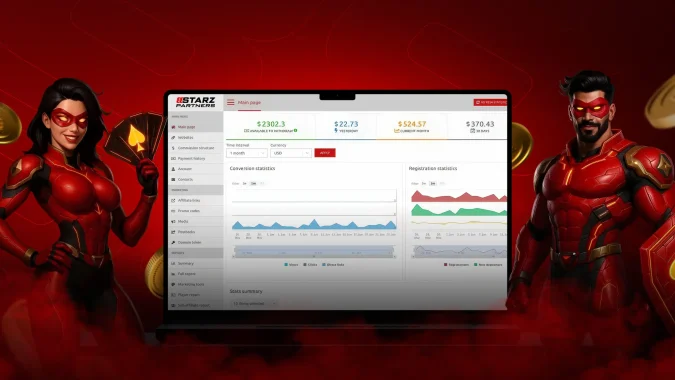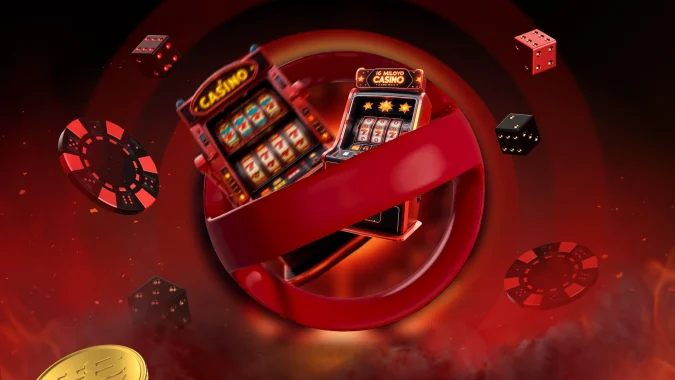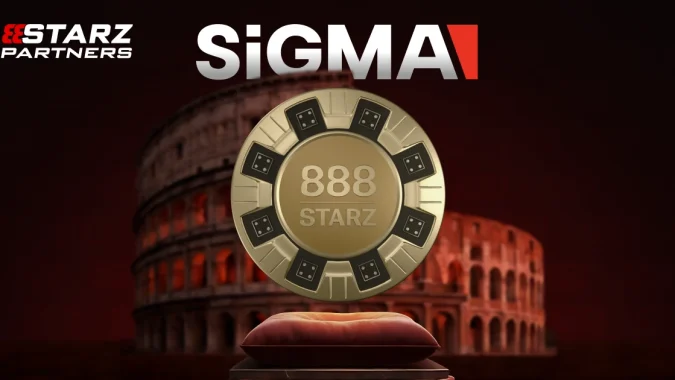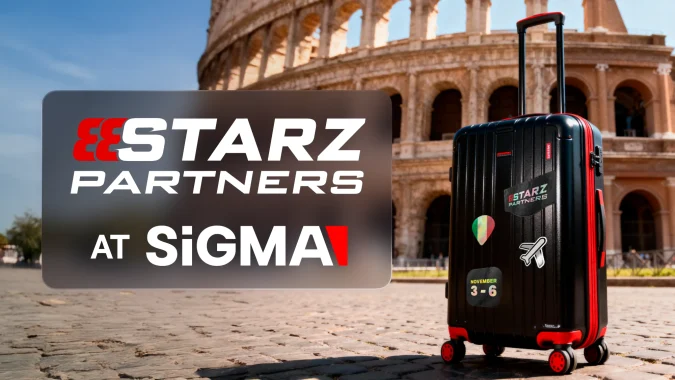Marketing in iGaming Vertical: How to Build a Clear System for Testing Offers and Funnels
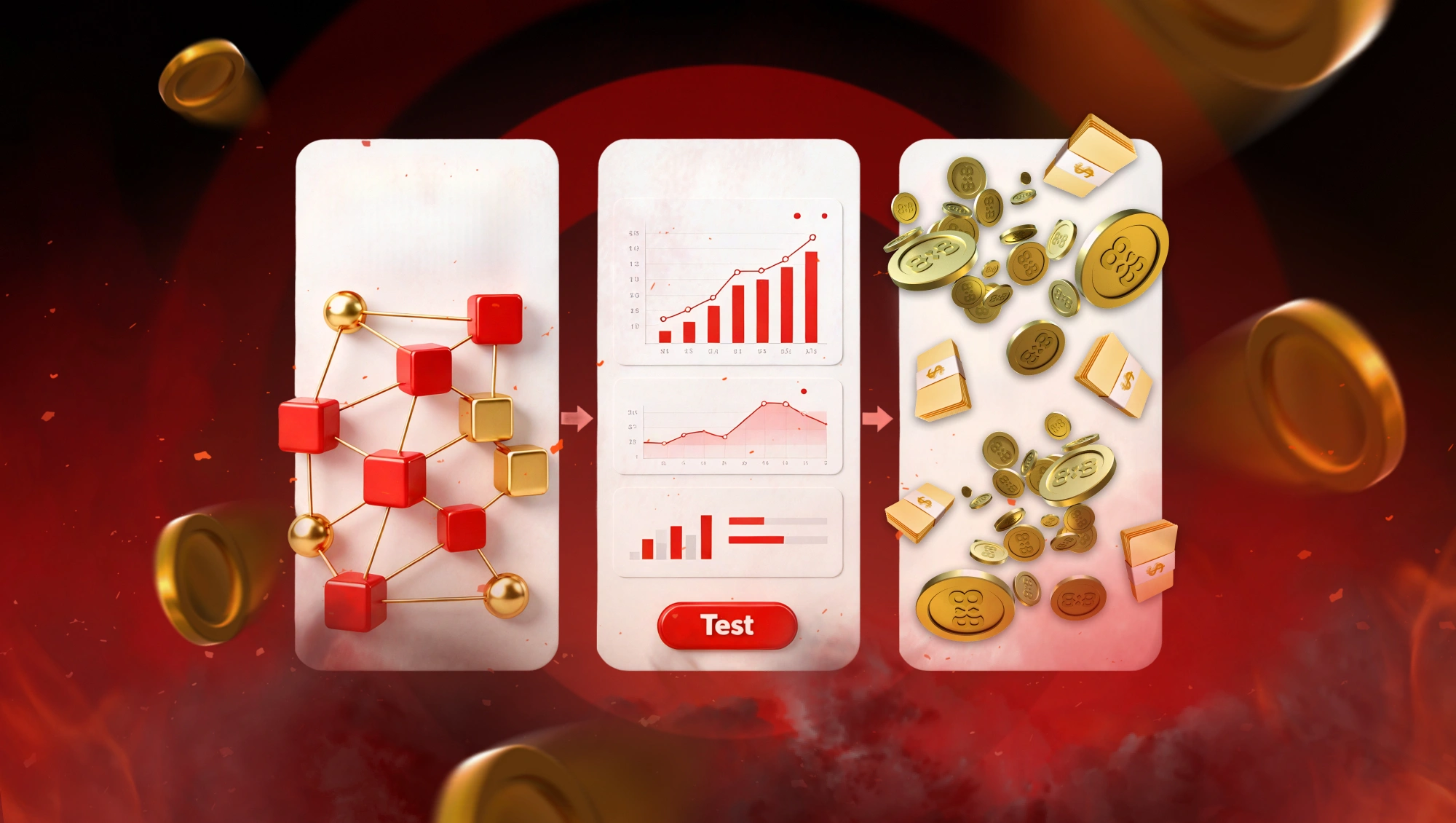
- Metrics and Goals
- Basic Metric Structure
- Setting the Right Goals for a Test
- Secondary Metrics
- Research and Hypotheses
- Quick Hypothesis Templates
- When to Skip a Test
- Pre-Test Math of an Offer
- Decision Logic: To Test or Not to Test
- Test Design and Budgets
- Variable Control and Experiment Logs
- Anomaly Checks and Microtests
- Kill-Rules and Thresholds
- Example of Kill-Rules for RevShare
- Cohort Analysis & Decision-Making
- How to Read Cohorts
- Risks and Pitfalls When Testing Offers
- 1. False or Incomplete Data
- 2. Delayed Deposits and Holds
- 3. Offer or Creative Burnout
- 4. Poor Understanding of Audience and GEO
- 5. Budget and Scaling Mistakes
- 6. Unrealistic Expectations
- 7. Ignoring External Factors
- What to Choose — and When
- Conclusion
- Frequently Asked Questions
You can drive tens of thousands of clicks a day — but if you don’t understand how to properly test offers and funnels, it all turns into an expensive hobby. Without a clear testing framework, you risk burning through campaigns with zero analytics to show for it. In gambling, that hurts even more. Competitors cut offers, affiliate programs tighten rules, traffic sources filter your clicks — and you’re left staring at piles of stats without a clear picture.
That’s why the 888STARZ Partners team decided to break down the testing process — no theory for theory’s sake. This guide gives you a ready-to-use affiliate testing map: a step-by-step offer and funnel testing system, formulas for EPC, LTV, and budget calculations, plus a practical kill-rule checklist that actually saves money. You’ll also get a complete set of metrics to help you instantly see whether to scale or kill the campaign.
Metrics and Goals
This is the core of any testing system. Until you understand which numbers actually drive your revenue, testing makes no sense. And it’s not just about knowing CTR or CR — real analytics begin when you see relationships: which metrics impact profit, which are secondary, and how to connect everything into one decision-making framework.
Basic Metric Structure
Any affiliate funnel consists of three levels:
Traffic → Lead → Conversion → Money
Accordingly, metrics can be grouped by meaning:
- Marketing: CTR, eCPC, CPM, Bounce Rate
- Behavioral: CR (click→reg), reg2dep, Approval Rate
- Final: EPC, ROI, LTV
The biggest rookie mistake is evaluating performance by top-level metrics. In online gambling, you might celebrate a 20% CTR — only to realize you got zero deposits. Your creative may grab attention, but not from your target audience. That’s why a stable EPC matters far more than flashy click-throughs.
Here’s a quick rundown of the key metrics and what they really mean for an affiliate:
- CTR — shows how well the creative catches attention, but not click quality. High CTR + low CR = wrong audience.
- CR (click→reg) — the first real interest filter. In gambling, 10–20% is healthy; lower means issues with landing pages or user trust.
- Reg2dep — the key test metric. It defines profitability and long-term viability of the iGaming offer.
- Approval Rate — your affiliate program’s validation of traffic quality. Below 60–70%? Talk to your personal manager.
- EPC (Earnings per Click) — the main KPI of testing, connecting clicks to money: EPC = (FTD × payout) / clicks.
- ROI — shows overall business health: ROI = (revenue – spend) / spend × 100%.
Pro tip: never focus on a single number. Always look at the metric bundle — CTR + CR + reg2dep + EPC. That’s the only way to see if a funnel is alive or if it’s time to cut it.
Usually, threshold values are set before launch. For example:
CTR > 1%, CR > 3%, EPC ≥ $0.5, ROI ≥ –30%
Adjust numbers for each traffic source, but without benchmarks, you’ll never know whether to continue or stop.
Setting the Right Goals for a Test

There’s no point in viewing a test through the lens of profit. Your main goal here is to collect statistically reliable data that helps you decide whether to scale, refine, or drop a funnel.
A classic test should aim to:
- Check whether the offer can at least reach EPC ≥ CPC — your break-even point.
- Identify which creatives deliver the highest CTR while keeping CR acceptable.
- Find out which combination (source + pre-lander + lander) yields the best reg2dep rate.
By the way, we’ve already covered how to calculate your break-even point (BEP) and move into profit — check out our separate article if you missed it.
Beyond EPC, it’s just as important to track your approval rate and rejected leads. Many affiliates overlook this — and that’s a mistake. You might have an amazing EPC on paper, but if your Approval Rate drops to 40%, that “profit” isn’t real. In practice, you’re losing money.
How to check what’s wrong:
- Ask your affiliate manager for rejection reasons — they could be invalid GEOs, multi-accounts, VPN users, or payment issues.
- If the issue is external (e.g., banned GEO or old tracker), fix the traffic source.
- If it’s internal (poor traffic quality), kill the hypothesis and move on.
A healthy approval rate for gambling is 70–90%. If it falls to around 60%, it’s worth digging deeper.
Secondary Metrics
Besides the main KPIs, there are several additional metrics — the second layer of analysis. They’re not critical, but they help uncover details that can point you in the right direction:
- Creative CTR — shows which visuals perform best, but it’s not a KPI for testing.
- Retention / Repeat Deposits (for RevShare) — reflect a player’s real value and are crucial for accurate LTVcalculations.
- Average Deposit / Player Value — useful for analyzing LTV and forecasting ROI.
Based on these metrics, your test can be considered complete when:
- You’ve collected at least 100–200 clicks per creative (enough to judge CTR and CR).
- You’ve got 10–15 registrations and at least 2–3 deposits — the minimum sample size to analyze reg2dep.
- The data remains stable for at least 2–3 days without major EPC fluctuations.
Once that’s done, you can close the test and move to the next phase — deep analysis and final hypothesis validation.
Research and Hypotheses
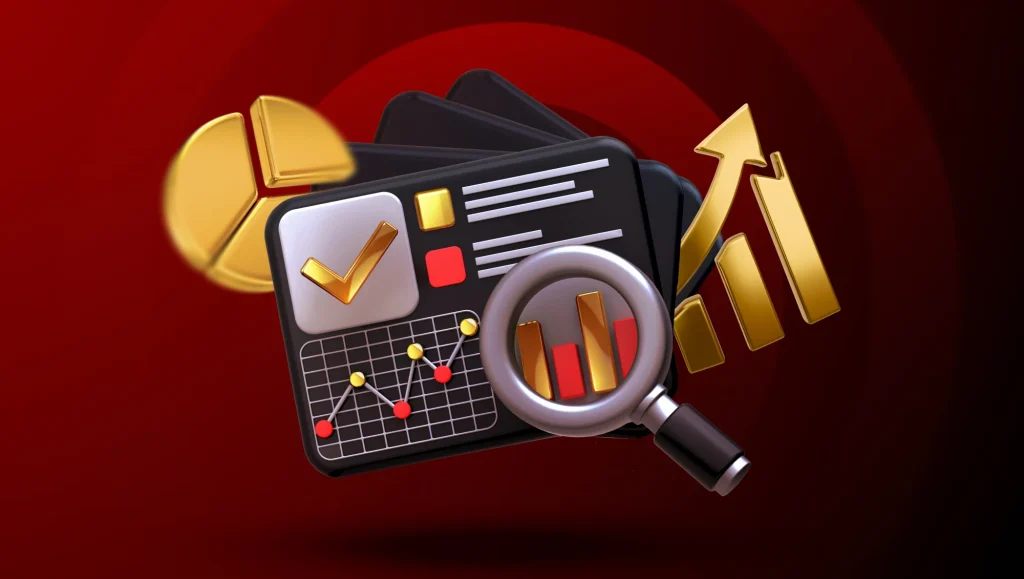
Every test starts not with a creative or a landing page — but with your brain. Until you understand what data your decisions are based on, any number can be interpreted however you want. That’s why the first step isn’t to randomly launch an offer or a funnel — it’s to ask yourself three key questions:
- Where will I get my data?
- What exactly do I want to test?
- And how much am I ready to lose if the hypothesis fails?
The most common mistake for beginner affiliates is testing blindly. You can’t build a system if you don’t understand its foundation. Your base should always rely on verified data sources:
- Affiliate dashboard: check reg→dep, offer payout, average APY/LTV, chargeback rate. Don’t be lazy — ask your manager for screenshots or CSV exports. They always have them; most people just don’t ask.
- Tracker / Postback: verify the full chain — click → reg → FTD. If there’s no postback from the affiliate program, don’t even start testing.
- Your past campaigns: a great mathematical reference point. Take average CTR/CR for similar GEOs and formats — that’s more reliable than any “market average.”
- Community & peers: nothing beats real experience. Sometimes a single data point from a fellow affiliate or a chat discussion can save you hundreds of dollars in tests.
Before dropping $500–$1,000 on testing, run a quick sanity check using this simple formula:
EPC (expected revenue per click) = (Payout_per_FTD × reg2dep) / avg_clicks_per_reg
To put simply, it means expected earnings per click = (average deposit payout) × (chance a user deposits) ÷ (average clicks per registration).
The golden rule:
- If EPC < CPC — don’t even start;
- If EPC is slightly higher than CPC, test carefully with a micro-budget and strict kill-rules.
Case of one of the affiliates: once I had a sanity check showing EPC = $0.48 while CPC was $0.55. We decided to “give it a shot” and lost $300. A week later, the same offer with an optimized landing page reached EPC $0.72 — simply because we recalculated conversions properly instead of guessing.
Next, formulate your hypothesis using this simple structure: If X → then Y → because Z. Here’s an example: if we replace a “registration bonus” landing page with a “deposit bonus” one, CR will increase because users in the second funnel are more motivated to act.
A good hypothesis is specific, measurable, and explainable. Here’s one more working template: if we launch [traffic source X] + [creative Y] + [lander Z], we expect CR↑ to A% and reg2dep↑ to B%, because [behavioral insight / local feature / offer trigger].
Perfect — this is a very strong practical block. Here’s a native, marketing-pro translation that keeps your expert yet approachable tone, natural phrasing, and affiliate-industry vocabulary:
Next let’s look at a few examples to make things clearer:
“If we use a TikTok creative with crash-game dynamics and a localized pre-lander, CR in India will increase from 1.2% to 1.8%, because players there prefer fast formats and TikTok has high CTR on this topic”.
“If we replace a generic banner with an offer that includes a promo code and emphasizes quick deposits, reg2dep in LatAm will rise from 18% to 28%, because local payment systems and bonuses motivate players to fund their accounts”.
You shouldn’t test more than three hypotheses at once. Rank them by simplicity and impact:
- Impact (effect on EPC/LTV): low / medium / high
- Effort (time and cost): low / medium / high
- Risk (potential loss): low / medium / high
Always start with high-impact / low-effort ideas. Cut anything that’s high-risk / low-impact.
Quick Hypothesis Templates
To avoid spending half a day brainstorming, use a few common starting points:
- Traffic source: push vs. social vs. influencer — compare CTR and eCPC using the same creative.
- Creative: “jackpot dropped $X” vs. “crash-game tutorial” — track CR and Approval Rate.
- Pre-lander (if used): long vs. short — affects reg2dep and bounce rate.
- Payment methods: test local options — if they don’t convert, LTV drops.
For every hypothesis, define:
- Primary KPI — your main decision-making metric (FTD / EPC / reg2dep);
- Secondary KPI — supporting metrics (CTR, CR, Approval Rate, eCPC, LTV 30d).
Example: For a RevShare test → Primary KPI = projected EPC and 30-day LTV. For CPA → Primary KPI = number of FTDs per X clicks.
When to Skip a Test
It’s better not to launch a test if:
- There’s no postback.
- EPC < CPC.
- Approval Rate < 50%.
The last one isn’t always fatal — first, talk to your affiliate manager. Also, if the offer looks suspicious (no history, unclear terms) and the manager isn’t willing to provide test support or a hold, that’s a serious red flag.
To avoid issues like that, start right away with a reliable affiliate program like 888STARZ Partners. Follow this link to check out our detailed guide on how everything works — and how to build communication with your personal manager to start growing your income faster.
Before launching any campaign, go through this short prep routine of a test:
- Ask your affiliate manager for: payout, reg2dep, average LTV by GEO, and supported payment methods.
- Prepare 2–3 hypotheses with specific KPIs and kill-rules.
- Calculate EPC and minimum budget (see the Test Design section below).
- Set up your tracker + postback + SubID tags (for creatives, landers, and sources).
- Run a micro-test and record your data daily.
Pre-Test Math of an Offer
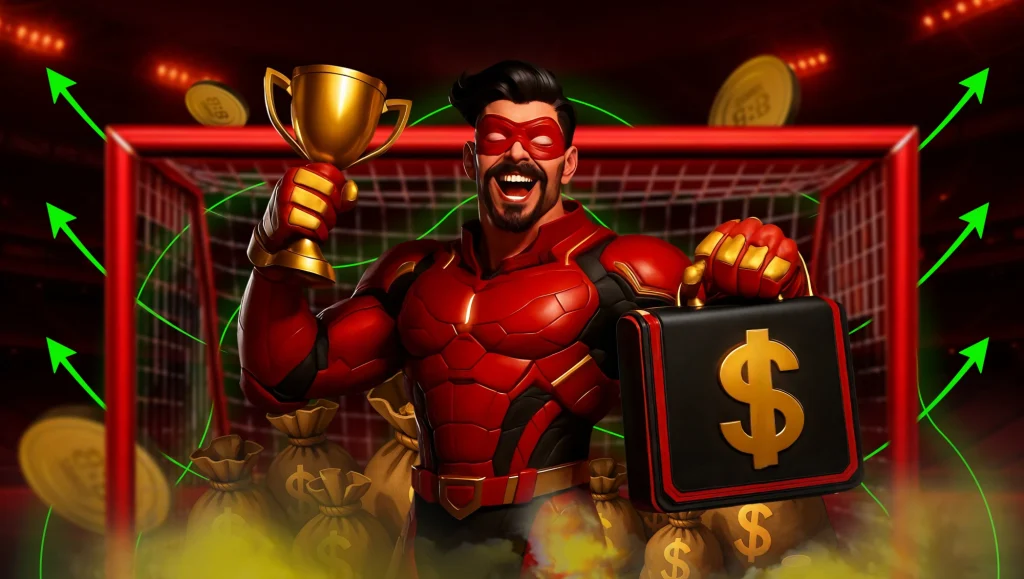
Before you even launch a test, you need to understand one simple truth: does this offer actually have a chance to survive — given your bids and traffic sources? Many affiliates burn money simply because they didn’t spend ten minutes doing the math. At this stage, you’re not sending traffic — you’re calculating.
An affiliate program might show you a beautiful EPC — $1.20 for India, $3 for Canada — but without context, those numbers mean nothing. EPC depends on your traffic source, creative, season, format, and quality. So before testing, you must translate the offer into your own metrics: at what CPC do you even have a chance to break even?
If the offer’s EPC is $1 and your real CPC is $0.70, you can expect an ideal ROI of around +40%, and that’s only with good approval. If your CPC is $1.10 — nothing will save it; the offer is unprofitable by design.
For clarity, here are a few common formulas to check whether your offer is even viable:
- EPC (from the network) = average earnings per click across all affiliates.
- Your eCPC (in the source) = cost per click on your creatives.
- Projected ROI = (EPC / eCPC – 1) × 100%.
If the projection is negative, the offer isn’t worth testing. If it’s around zero (±10%) — you can run a short test to check the hypothesis. The best case is when the figure is 30–50% or higher. If the program doesn’t show EPC but provides payout and CR, calculate it yourself:
EPC = (CR click→dep × payout)
For example: 0.02 × 80 = $1.6. Then, if your CPC is $0.6, the projected ROI is: (1.6 / 0.6 – 1) × 100% = +166%. That’s not a guarantee, but it shows the offer is worth testing. If EPC turns out $0.5 while CPC is $0.7 — you can cross it off right away.
The minimum test budget formula is straightforward:
Minimum budget = (Click price × required number of clicks)
To make your test statistically meaningful, you need at least 100–200 clicks per creative and 50–100 registrations per offer, assuming the expected CR is in the 10–20% range. So if your CPC is $0.5, a test for the offer should cost around $50–100 minimum. If it’s less — you’ll just get false conclusions.
Decision Logic: To Test or Not to Test
You should test an offer or funnel if:
- Projected ROI > 20–30%;
- The offer is new or under-used in your GEO;
- Your traffic source delivers high-quality clicks below average CPC;
- You can get 100+ leads without blowing your budget.
Avoid testing when:
- The offer is old and EPC has been dropping for weeks;
- Your CPC exceeds projected EPC, even at the hypothesis stage;
- There’s no transparent postback or reg→dep data;
- The affiliate manager can’t explain why the EPC is “so high.”
Sample pre-test table:
| Metric | Value | Comment |
| EPC (from affiliate) | $1.20 | Average for GEO |
| Your CPC | $0.55 | ✅ OK |
| Projected ROI | +118% | Worth testing |
| Minimum budget | $70–100 | Fine for a micro-test |
| CR (click→dep) | 1.5–2% | Average |
| Approval rate | 80% | Healthy |
| Decision | Test | Positive margin, manageable risk |
Test Design and Budgets
Once an offer has passed the “math check for survival”, the next crucial stage begins — proper test organization. This is where most affiliate marketers lose their cash: no structure, no data logging, and no clear line between when the test ends and chaos begins.
In our case, test design means a structured experiment plan. It defines what exactly you’re testing (the hypothesis), which variables you’re using (creatives, landers, GEOs, sources), and under what rules you’ll make decisions.

Without a clear design, you’re not testing — you’re just pouring money into the void. So here’s a classic example of a properly structured setup:
- Testing which approach gives a higher CR (let’s say in India): emotional or neutral.
- Format — push traffic, fixed CPC.
- 2 landers × 3 creatives, test for 3 days or until 300 clicks per funnel.
Every point should be documented. Later, it will help you see what worked — and why exactly.
To make your test meaningful, you need enough data. If the offer’s CR is around 2%, you’ll need roughly 500 clicks to get at least 10 conversions. A test with 50 clicks tells you nothing — it’s just random noise that won’t reveal the real picture.
Minimum budget formula:
Minimum budget = (Click price × 500–1,000 clicks) per funnel
If your CPC is $0.6, the minimum budget for a test is $300–600. Sure that might sound like a lot, but without enough data volume, even the best creative won’t show whether it truly works due to the level of quality and marketing strategies — or if it just “got lucky”.
Variable Control and Experiment Logs
The golden rule: when you change one variable — keep everything else fixed. If you’re testing landers, keep creatives and bids identical. If you’re comparing creatives — don’t touch landers or GEOs. Otherwise, you’ll have no idea what actually drove the results.
A common mistake among affiliates is changing everything at once — creatives, bids, and targeting. In the end, one of the creatives might have been a winner, but it got buried because of a bid change or a new traffic source.
Next comes logging, your personal test history — something that saves tons of time. At minimum, you should track next things:
- Launch date
- GEO
- Traffic source
- Offer
- Creatives / landers
- Budget
- Metrics (CTR, CR, ROI, EPC)
- Decision (scale / stop / rework)
After about a month, you’ll start building your own knowledge base. You’ll see patterns and understand how your funnels really behave. Also, remember that not every offer converts overnight. If an offer has a 3–5 day hold, there’s no point in making decisions earlier. For CPA models, you can start drawing conclusions after 2–3 days of traffic. For RevShare, wait at least a week and more.
Golden rule: don’t cut or scale your campaign until you’ve collected enough data.
Anomaly Checks and Microtests
Every traffic source behaves differently. If you see a CTR three times higher than usual but zero CR — the clicks are junk. If EPC suddenly jumps without reason — check your postbacks, filters, and tracker setup. A proper test isn’t just about conversions — it’s also about spotting what distorts your stats.
You can also run microtests at the start — around $30–50 per funnel — to quickly validate an approach. Scaling decisions should only be made after a second round with a higher spend, typically 3–5× the initial test budget.
Here’s test design checklist:
| Element | Checked | Comment |
| Hypothesis formulated | ✅ | Clear goal of the test |
| Variables fixed | ✅ | Only one parameter changes |
| Minimum traffic volume calculated | ✅ | At least 500 clicks |
| Test duration defined | ✅ | 3–7 days depending on model |
| Holds and approvals accounted for | ✅ | No early decisions |
| Experiment log maintained | ✅ | Use a spreadsheet or Notion |
Kill-Rules and Thresholds
Kill-rules are clear stop conditions based on metrics. They answer the key question: “When should I turn off the funnel before it burns my budget?”. Without them, you’ll keep dragging a dead campaign for “just one more day”, hoping it will magically start working.
Each testing stage has its own criteria. At the start, you’re checking interest and clickability; later — conversion and profitability. Here’s an example of minimum benchmarks for iGaming marketing offers:
| Stage | Key Metric | Stop Threshold | Comment |
| 1. Click test (1–2 days) | CTR | < 0.5% | If CTR is lower — the creative doesn’t appeal to your audience |
| 2. Mini test of the funnel | CR (Reg) | < 1% | If it’s below this — the lander fails to convince |
| 3. Main run | ROI | < –40% after 2 payouts | Chances of turning profitable are minimal |
| 4. Retest of “winning” setups | ROI | < –15% | If it can’t stay positive on retest — discard it |
These numbers aren’t strict rules — they’re reference points. The key is to have your own system so decisions stay data-driven, not emotional.
A common trap for beginners is keeping bad marketing campaigns afloat. For instance, if after 1,000 clicks your CR is under 1%, no optimization will save it. The issue isn’t the creative — it’s the whole funnel. Every extra minute of spending is just burning your test budget, which could be used on a new hypothesis instead.
Keep in mind that different channels behave differently:
- Facebook Ads: the first 24 hours mean nothing — the algorithm is still learning.
- Push and pop traffic: make decisions after 300–500 clicks.
- Google Ads: wait at least 2–3 days of stable traffic before judging performance.
The most important rule — don’t interfere with the algorithms. While the test is running, don’t touch bids, creatives, or GEOs. Otherwise, your current data resets, and your kill-rules become meaningless.

After every test, log the following:
- Reason for stopping: failed CTR, low EPC, unprofitable ROI, etc.
- Decision made: stop campaign / rework / scale.
- Next step: new landing page, different offer, change in approach.
This habit makes your work systematic. Within a month, you’ll start noticing patterns — for example, that certain GEOs consistently drop EPC, while others hold a stable ROI.
Example of Kill-Rules for RevShare
The RevShare model is a different beast — results don’t show up instantly. If your test runs for 3–5 days and EPC is growing but ROI is still negative, there’s no point in cutting the campaign too early. In this case, you should focus not on the first deposit, but on repeat deposits (ReDep%) and the player’s lifetime value (LTV).
RevShare kill-rules must account for delayed feedback — wait at least a week of data before making a decision. Here’s kill-rules checklist:
| Parameter | What to Do |
| CTR below threshold | Change your angle or creative |
| CR below threshold | Test another lander or offer |
| ROI < –40% after 2 payouts | Stop the funnel |
| No registrations after 500 clicks | Stop or rework the hypothesis |
| ROI drops after scaling | Recheck segments and traffic sources |
| No repeat deposits (ReDep) within a week | Replace the offer |
Cohort Analysis & Decision-Making
A cohort is a group of users who share a common trait — for example, traffic source, GEO, launch date, creative, landing page, or device type. Example: “Players from Bangladesh acquired via push traffic on Oct 10–12 using creative #3”.
When you analyze results by cohort instead of overall averages, hidden patterns become visible. You might see an average ROI of –10%, but one cohort (e.g., Brazil + Android + video creative) could actually deliver +40%.
Without cohort analysis, you’d cut the whole campaign and kill a profitable segment along with the bad ones.
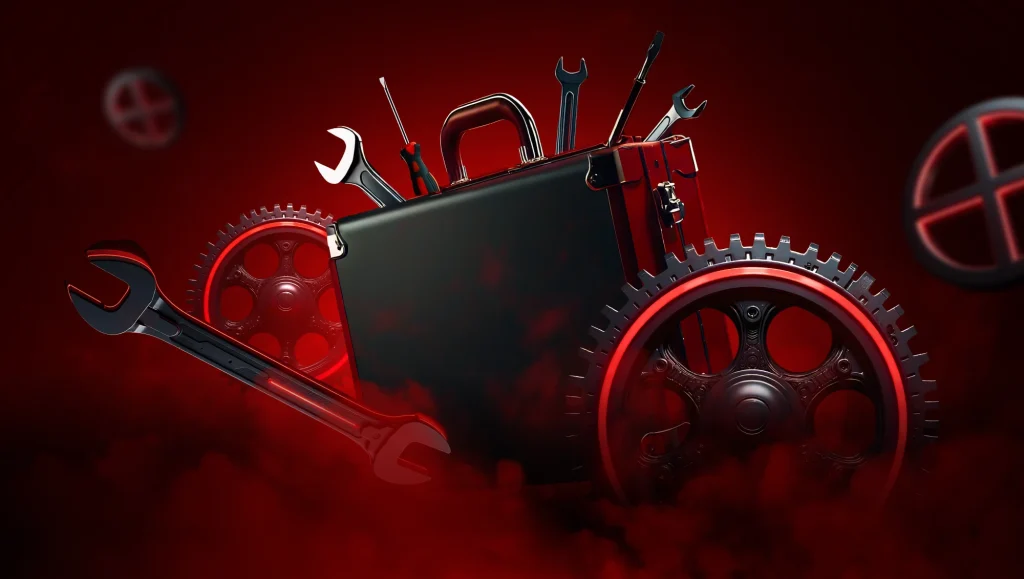
You need to record parameters for every test. At minimum, track:
- Traffic source
- GEO
- Device / OS
- Creative and landing page (ID from tracker)
- Launch date and traffic volume
- Monetization model (CPA / RevShare / Hybrid)
- Core metrics: CTR, CR, EPC, ROI, LTV (if provided by your partner program)
Keep all this data in one place — your tracker, CRM, or even a structured Google Sheet with filters. The key is consistency: without a clean structure, no analytics tool will save you.
How to Read Cohorts
After the test run, look not just at total ROI but at how parameters interact. Example:
| GEO | ROI | EPC |
| Sri Lanka | –20% | $0.6 |
| Brazil | +25% | $1.4 |
| Kenya | +10% | $0.9 |
Conclusion: the offer converts well in LatAm, but not in Asia. You don’t need to change the offer — just redirect your traffic. The same applies to sources: a bundle might lose money in Push but be profitable in TikTok. Cohort analysis helps you pinpoint exactly where it makes sense to scale.
So you should scale only when a cohort shows positive ROI after at least two retests. Don’t chase a single number — look for stability. If ROI stays around +20% for three days, increase the budget by 1.5–2 times.
Optimize weak but promising cohorts — for example, if EPC is high but ROI still negative. That means interest exists, but you’re losing users on the lander or registration step. Fix the funnel instead of replacing the offer.
Special note on RevShare. This model requires a different lens since profits arrive later. Here, cohorts are tracked by delayed metrics — ReDep%, LTV, and player activity after 7–14 days. Even if Day-1 ROI is –30%, but the same cohort’s LTV is growing, that’s a strong reason not to cut it. For RevShare, cohort analysis is the only reliable way to distinguish slow money from a real loss.
Now let’s imagine an example test, which consists of casino offer, TikTok traffic, 3 creatives, and 2 landers:
| GEO | Creative | Landing | ROI Day 1 | ROI Day 3 | ROI Day 7 | Decision |
| Brazil | #1 | #1 | +15% | +28% | +35% | Scale |
| India | #3 | #2 | –25% | –30% | –35% | Stop |
| Hungary | #2 | #1 | –10% | +5% | +12% | Optimize |
From this table: India is out, Brazil scales, and Hungary deserves refinement — the creative works, but the conversion flow still needs tuning.
For convenience, build cohort reports directly in your tracker (Binom, Keitaro, AdsBridge) or export to Google Data Studio. For systematic media buyers, automation is a must-have: you see which cohorts perform right inside your dashboard — no manual calculations needed.
Here’s a native English version of your section — accurate to the original structure and meaning, but phrased naturally for a professional affiliate marketing audience. Tone: expert yet readable, same as your previous translated parts.
Risks and Pitfalls When Testing Offers
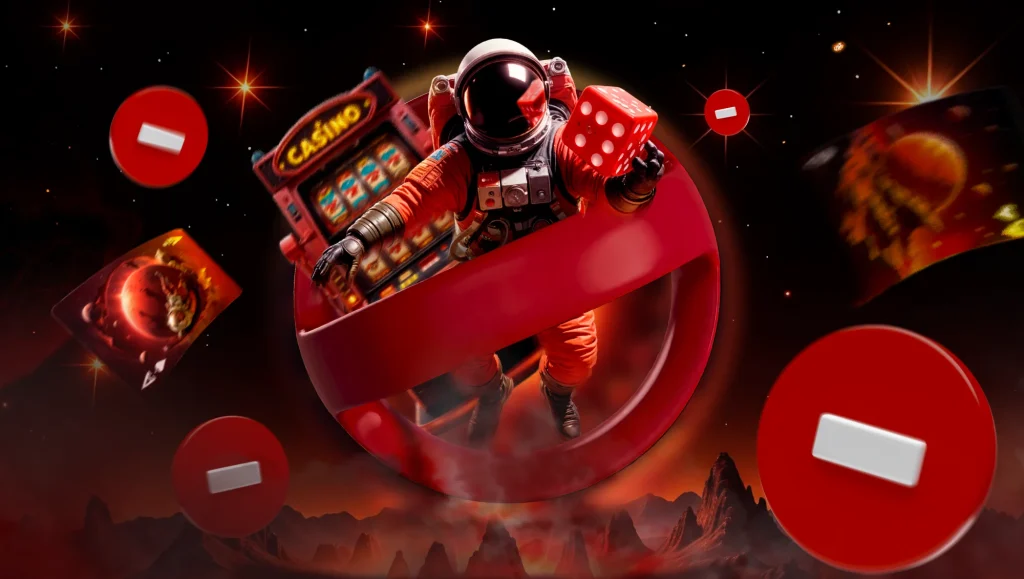
Even with a solid testing framework, an affiliate can easily lose money — not because of bad offers, but due to process errors. Most failures happen not at the traffic stage, but because of distorted analytics, wrong conclusions, or overlooked factors. So let’s name main of them:
1. False or Incomplete Data
The biggest trap is making decisions based on partial statistics. For example, EPC may appear to rise, but postbacks are delayed — and your real ROI is actually negative. Or CR drops because the affiliate program rejected some leads, but you didn’t notice. Always cross-check numbers between your tracker, affiliate network, and ad platform.
2. Delayed Deposits and Holds
In gambling, players often make deposits after the first day. For RevShare or hybrid models, you can only see the true picture after 3–7 days, when users return and make additional deposits. If you make “hot” decisions too early, you’ll kill a promising funnel. Set a minimum cooldown period before final judgment.
3. Offer or Creative Burnout
Many assume an offer has “died,” when in reality it’s just past its initial hype phase. If the offer has been trending in spy tools for more than two weeks, creatives are likely burned out and CR naturally drops. Don’t rush to drop it — refresh your angle, frame, or funnel instead.
4. Poor Understanding of Audience and GEO
A funnel that performs great in one region might flop in another. The mistake is copying metrics without context. In India, players tend to deposit via mobile and respond better to visual creatives, while in LatAm, emotional hooks and “instant win” messages convert better. Analyze user behavior for each GEO separately.
5. Budget and Scaling Mistakes
The most common issue is premature scaling. If your test shows +15% ROI after 200 clicks, that’s not a signal to scale. Before increasing spend, make sure your sample size is statistically valid, CR is stable, and ROI doesn’t crash once traffic volume grows.
6. Unrealistic Expectations
Some affiliates expect tests to instantly bring profit — that’s a misconception. The goal of testing isn’t to earn — it’s to understand. If you switch offers after every losing test, you’re not testing — you’re just spraying traffic randomly. A proper framework focuses on systematic iteration, not emotion.
7. Ignoring External Factors
Seasonality, algorithm updates, affiliate network holds, or moderation changes — all of these impact results. For instance, ROI often dips in January and May due to players’ post-holiday drop in spending. Always factor in market context, not just tracker numbers.
What to Choose — and When

Every test in affiliate marketing ends not with numbers, but with a decision. A systematic webmasters doesn’t just stare at ROI — they act: scale, optimize, or stop. The key skill is telling apart a fixable minus from a hopeless one.
If CTR looks fine but CR is weak, the issue is usually in the landing page or offer. That’s fixable: try a different approach, another landing, or adjust the offer for the audience. But if EPC keeps falling no matter what you do — the funnel simply has no demand. Better to shut it down than burn your budget hoping for a miracle.
Don’t look only at ROI. Break the funnel into stages: CTR → CR → Reg → Dep → EPC. If CTR is fine but CR drops — fix the landing. If CR is okay but deposits don’t come — the offer or traffic source doesn’t match your audience. Document each test so you don’t repeat the same mistakes.
Payout model also matters:
- For CPA, continue testing if the first wave recovers at least 30–40% of your target payout.
- For RevShare, take your time — delayed deposits often reveal the real picture after several days.
Always judge by the long-term trend, not short-term fluctuations.
During major events — championships, slot tournaments, or offer updates — the market overheats. Metrics get distorted, so it’s wiser to shift focus to Tier-2 or Tier-3 GEOs, where competition is lower and traffic quality higher.
As a result, it all comes down to three possible outcomes:
- Scale — if the funnel consistently delivers ROI in the green.
- Optimize — if there’s a weak link but visible potential.
- Stop — if the offer shows no signs of life even after iteration.
Conclusion
There are no magic buttons in affiliate marketing — only processes. And testing offers are the most important ones. When you work systematically instead of chaotically, you know exactly where each dollar goes and why a funnel succeeds or fails.
A strong framework is simple: Hypothesis → Test → Analysis → Decision → Scale. Repeat the cycle until you get consistent profit. That’s the real skill of a marketer — not guessing, but managing outcomes.
And most importantly — test where it actually makes sense. Affiliate programs like 888STARZ provide a wide range of online gambling and sports betting offers, transparent analytics, and flexible payout models — everything you need to build and maintain a stable testing system.
So if you’re ready to stop playing with your traffic — build your own strategy, trust the data, and test smart. It’s the only path to long-term success in gambling affiliate marketing.
Frequently Asked Questions
What traffic sources work best for online casino and gambling offers?
In the iGaming vertical, the top-performing traffic sources are:
Popunder + pre-lander combo — a classic for gambling in Tier-2/3 GEOs.
Push / In-Page Push — cheap clicks and fast creative testing.
Pop / Redirect — massive volumes, ideal for Tier-3 GEOs.
SEO / ASO — stable organic flow, but takes time to build.
Facebook / TikTok / UAC — powerful, but high risk of bans.
Native ads — great for soft gaming and white-hat offers.
Telegram / YouTube / influencer marketing — trust-based traffic with high conversion when properly warmed up.
Which KPIs should you track during testing — and why?
Actually it depends on the source, but the core metrics are:
- CTR (Click-Through Rate) — shows if your creative grabs attention.
- CR (Conversion Rate) — reveals how well your offer actually converts.
- CPL / FTD Cost — cost per lead or deposit; your main KPI vs. acceptable threshold.
- ROI / Profit Margin — the final measure of profitability.
During the initial test, the usual goals are:
10–20 registrations — enough to make basic conclusions on CR.
100–200 clicks per creative
50+ clicks per landing page
When should you stop a losing test?
If you’ve driven a few hundred clicks with zero registrations — stop. If CR is low and CPL is twice your target — also stop. Common stop-thresholds for gambling traffic include next:
- CTR below 0.1–0.3% (Push/Native) → creative doesn’t engage.
- CR < 1–2% after 300–500 clicks → funnel doesn’t work.
- CPA exceeds KPI by 30–40% after 3–5 FTDs → stop.
- No registrations after 300+ clicks → stop immediately.
Dragging a campaign that trends negative only burns the budget.
How to set kill-rules for creatives and GEOs?
For creatives:
- CTR below campaign average → turn it off.
- No registrations after 100–150 clicks → remove it.
- Impressions but no clicks → change the headline or visual.
For GEOs:
- No FTDs after 5–10 registrations → cut the country.
- CPA 40–50% above KPI → pause or test a new landing.
- Huge EPC gaps between sources → keep only profitable ones.
If the data doesn’t move you closer to break-even — terminate it all without any hesitation.




